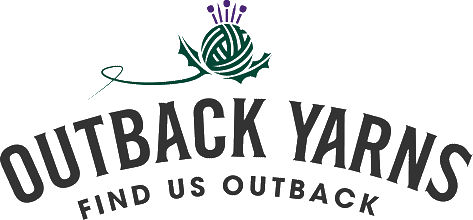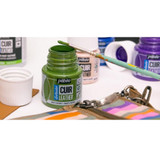Cloth masks - Education Information and Patterns
Cloth Mask Education and Information
We have recently had many requests to provide materials or patterns for cloth masks, given the current climate of worry surrounding contracting COVID-19. We wish to make it very plain from the beginning of this article that we are not publishing this information with any intent to advise customers about any additional protection of wearing cloth masks or with any guarantee about their effectiveness in protecting from transmission of any kind of microorganism as this is heavily influenced by the correct wearing, washing, care and reuse of these items which may not be followed consistently by everyone.
The single most important and effective way to reduce community transmission of any disease, and specifically COVID-19, is through frequent and thorough hand washing with soap and water, or alcohol based handrub and through social distancing measures. These measures may be enhanced for certain members of the community by the wearing of certain Personal Protective Equipment, such as masks and gloves, but these tools are ONLY effective alongside the requirements set out by the government and health authorities, which for UK customers can be found here.
If, however, you do wish to use a mask, there are certain things you should be aware of when constructing and wearing them, which we will outline below with appropriate links where possible. Information about making a mask correctly, including a pattern will be provided further into the post.
Wearing/removing a mask correctly:
- You must not touch the unused mask until you have thoroughly washed your hands.
- The mask should be fitted in a way that makes it as airtight as possible, including over the bridge of the nose, around the cheeks and under the chin. Wearing eye protection is also advised.
- You should not touch the fabric front of the mask at any stage of putting on, wearing or removing the mask, as it may be contaminated. Use the elastics/ties as the only point of contact wherever possible and do not touch eyes/mouth/nose whilst putting on, wearing or removing the mask. If you do touch the front of the mask, wash your hands as soon as possible.
- Replace a mask when it becomes damp. Do not reuse cloth masks until they have been correctly washed and sanitised.
- When the mask has been removed, place it in a breathable paper bag until such a time as it can be safely washed. Minimise contact with used masks as much as possible.
- Wash masks on a hot wash setting and iron on a hot setting before reuse. Remember to minimise contact with sanitised masks as much as possible.
Making a cloth mask – materials and patterns.
- When constructing a cloth mask, there are certain fabrics that research has found to be more effective than others in offering protection from pathogens. The most effective fabric found was t-shirt/jersey or high-quality quilting cotton, followed by anti-microbial pillowcase cotton, linen and silk coming in last.
- In order to create as airtight fit as possible, it is important to include a small gauge wire or pipe cleaner (removeable) in the bridge section of the nose. This allows you to pinch the wire around the shape of the nose and reduce gaps between the mask and face.
- In order to create a snug fit around the face, elastic can be sewn into the seams of the mask.
- Masks should be at least 2-3 layers thick over the face to increase filtration capacity. This can be achieved by including a pouch in the mask where appropriate removeable/disposable filters can be inserted. Suggestions for these (with no guarantee of effectiveness) include folded high-quality paper towel, coffee filters or fiberglass-free vacuum filters. These should be disposed of in a way that would prevent transference of pathogens to surfaces or people. When filters are changed, the cloth mask cannot be reused without correct washing and sanitising.
Links to patterns
Below are some patterns or links to patterns which can be used to create a cloth mask. Please ensure that you follow all guidance from health authorities and if you believe you are ill, please contact your GP surgery by phone for further guidance or your emergency services if you are very unwell.
https://www.cdc.gov/coronavirus/2019-ncov/prevent-getting-sick/diy-cloth-face-coverings.html
https://my.modafabrics.com/inspiration-resources/face-mask-options
OUR BLOG POST
Introducing Pebeo Setacolor Leather Paints: Customization & Repair for Leather Products
Pebeo Setacolor Leather PaintsOverviewJust in time for your creative projects, we’re thrilled to ann...
A Guide to Sewing Needles and finding the point!
A Guide to Sewing Needles and finding the point!Sewing needles are the chief tool used for sewi...
Sewing Pins - What a choice!!
The helpful guide to choosing what pin does what and where best to stick it!Sewing pins are one of...
Dangling Decor for Spring and Easter Fun!
Hello one and all!Easter is fast approaching, so we thought we'd share with you the steps to making...
WYS Elements DK : Sustainable Knitting
It's now more important than ever to look after our planet and there are lots of little adjustments...
The Importance of Mistakes
It’s easy to feel discouraged when we’re not immediately great at a craft but mistakes are all part...






